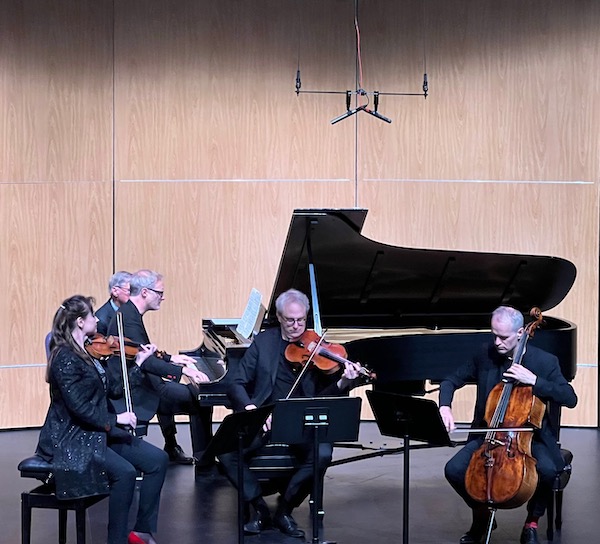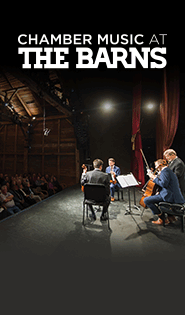Fauré Quartett opens Candlelight Concert Society season in style

The Fauré Quartett performed Sunday in the Candlelight Concert Society series. Photo: Sarah Shodja/CCS
When you go to hear a group called the Fauré Quartett play music by Gabriel Fauré, you expect the best. On Sunday afternoon the German piano quartet did its namesake proud to open the Candlelight Concert Society’s 51st season at Howard Community College’s Smith Theatre.
Playing as a group since 1995, the Fauré Quartett has doubtless bumped up against the limits of the piano quartet repertoire, so they’ve been expanding their repertoire with transcriptions. (Their version of Pictures at an Exhibition for piano quartet is worth a listen.) To start Sunday’s program, they played three of the five transcriptions of Fauré chansons included on their most recent disc: “Les berceaux,” “Notre amour,” and “Claire de lune.”
The arrangements, by Dietrich Zöllner, used the strings to essay the vocal lines; “Les berceaux” opened with a dark, lustrous solo from violist Sascha Frömbling, while the bright tone of Erika Geldsetzer’s violin lifted “Notre amour” before Konstantin Heidrich’s cello added depth in response. Pianist Dirk Mommertz provided decorous support, particularly in wave-like ripples to evoke the sea in “Les berceaux.” Of course, when sung, the chansons have the added dimension of the texts; however, Fauré’s melodies have plenty to charm the ear, particularly in these performances.
Would that Fauré had poured such memorable themes into his Piano Quartet No. 2 in G minor, Op. 45, a much more abstract-sounding work. The quartet made the best possible case for the first movement, giving it an orchestral sweep and bubbling energy, but the music contains few legible landmarks.
The inner movements came off best on Sunday. The Allegro molto second movement bristled with tension, in a way you don’t hear much in Fauré’s music. Mommertz began with restless piano over pizzicati before handing the melody to the equally agitated strings; later, Mommertz seemed to relish the dissonant intervals that helped the music scurry along to an abrupt close.
Mommertz opened the ensuing Adagio non troppo with murmurs from his piano, answered by yearning, quiet solos from Frömbling’s viola; the quartet maintained this intensity throughout, even as the music grew more complex. Geldsetzer and Heidrich expertly used their contrasting tone colors to bring different shades to the music as it wended down its path. The finale, by contrast, had lots of drive, and the Quartett musicians made the best possible case for their namesake’s work.
By contrast, Johannes Brahms’ Piano Quartet No. 1, which the quartet played after intermission, has no shortage of tunes and structure. Here the Fauré Quartett played fast and energetically, but lost a bit of refinement; occasionally, Mommertz seemed to be scrambling to keep up with the strings, and at one point in the Intermezzo second movement a couple measures of string music went missing.
In the Hungarian-inflected finale, marked Presto, the quartet frequently seemed about to careen out of control as they pressed the tempo. They ended up with no room to go faster when they got to the final episode’s accelerando, missing that last hit of excitement.
When the quartet played an arrangement of Fauré’s “Après un rêve” as an encore, it felt like a balm after the enervating Brahms and a reminder that, at least on Sunday, Fauré remained supreme in the Fauré Quartett’s repertoire.
The Candlelight Concert Society next presents the Australian Haydn Ensemble 7:30 p.m. October 21. candlelightconcerts.org




